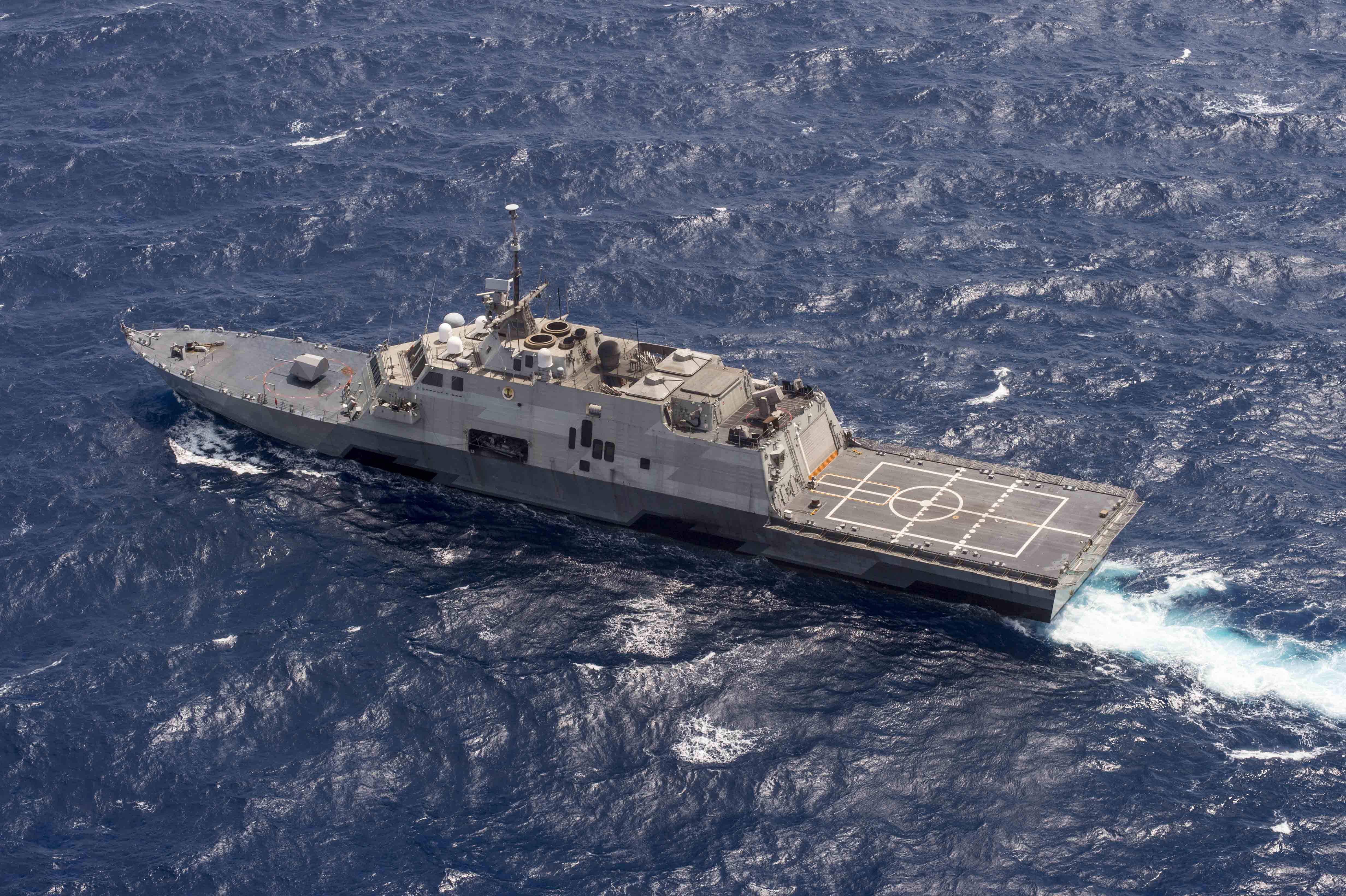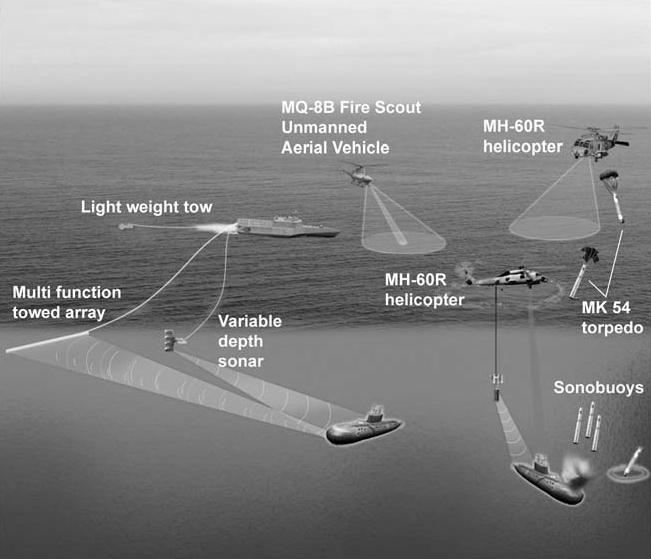
The Navy will not be able to send its anti-submarine warfare (ASW) mission package out to sea this year as planned, due to a restriction lawmakers put into the Fiscal Year 2016 funding bill.
Program Executive Officer for Littoral Combat Ships Rear Adm. Brian Antonio told USNI News last April that the Navy had an advanced development model – an early version of the mission package, prior to engineering to make the system lighter and more easily producible – that had gone out to sea in 2014 and generated “phenomenal” results. Antonio said PEO LCS hoped to get the system back out to sea in 2016 for additional testing and to help familiarize the fleet with the mission package capabilities ahead of mass production and fielding.
However, Antonio told USNI News Jan. 14 at the annual Surface Navy Association 2016 national symposium that the House and Senate appropriations committees ultimately barred him from sending the advanced development model (ADM) out to sea this year. The bill also removed $13 million in funding to “remove ASW operational assessment of non-requirements compliant developmental asset.”
Antonio said the language targets the one ADM he hoped to send out to sea this year but none of the PEO’s other activities.
“So what we’re doing in the mean time is we’re continuing with the program of record, learning as much as we can with operations if we can get onboard a ship and operate locally with it,” he said.
“it would have been helpful to be able to get it out for a couple reasons. One, fleet experience and fleet operations could get fed back into the acquisition process” to inform the Navy and industry as it refines the design into a production-representative engineering development model (EDM).
“But then just understanding more about the dynamics of the ship, separate from the fleet experience, but the dynamics of the ship using these systems – to say, you know what, try that with the ADM, it didn’t seem to work so well, and we can use that knowledge as we move forward with the EDM.”
Since the Navy won’t be able to learn these lessons at sea with the ADM this year, Antonio said the program would have to wait until the EDM is finalized and then do a risk assessment “either in an analysis perspective or some sort of surrogate perspective.”
PEO LCS will continue with the EDM development this year, making the current ASW mission package easier to mass produce, more suitable for shipboard operations and lighter.

LCS Mission Module Program Manager Capt. Casey Moton told USNI News in July that the ASW mission package weighed more than the allowed 105 metric tons. The mission package includes a Variable-Depth Sonar – the Navy chose the Thales UK Sonar 2087, the same VDS used on the Royal Navy’s Type 23 frigate – as well as the Multi-Function Towed Array used on the Arleigh Burke-class destroyers (DDG-51). Since the Navy cannot overhaul either mature system, it hired Advanced Acoustic Concepts, L-3 Communications and Raytheon to find more creative ways to reduce weight, Moton said – with an ultimate goal of reducing the mission package’s weight by 15 to 25 percent.
Antonio said last week that the companies were given some seed money to work on their designs, which were submitted to the Navy and are under review now. Once PEO LCS reviews the concepts for technical and cost considerations, it will award one or more contract options to the companies. He said he hopes to have an EDM he will be allowed to test in an operational environment in 2017.
Fleet leaders are eager to get the ASW mission package out to sea in whatever format they can. During the SNA conference, Commander of Naval Surface Forces Vice Adm. Tom Rowden talked about sending out special-purpose Surface Action Groups – the first of which will consist of three Arleigh Burke-class guided missile destroyers (DDG-51) but could eventually include the LCS with its ASW mission package. Director of Surface Warfare Rear Adm. Pete Fanta said at the conference that “the sonar going on LCS will increase our capability multifold against all submarines. Folks, if our submariners are afraid of a continuous active sonar at double-digit miles, what do you think the adversaries’ submariners are afraid of?” He said the system is “not perfectly tested” yet, but “there’s warfighting capability in this thing, and it’s overwhelming even our own submarines and surface ships and [their] ability to target and move forward.”





